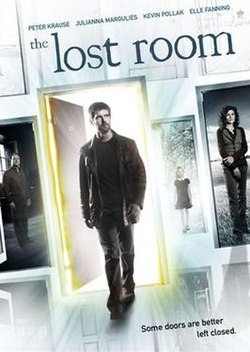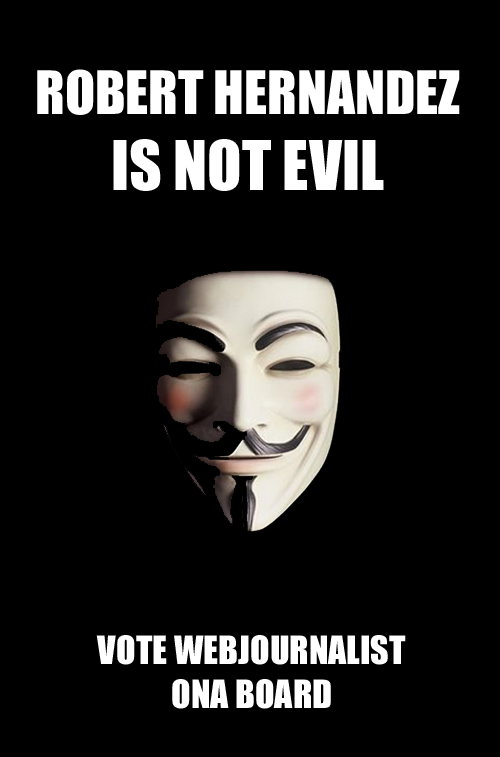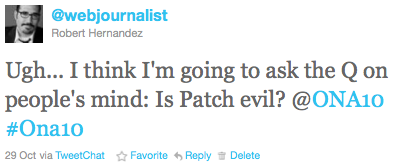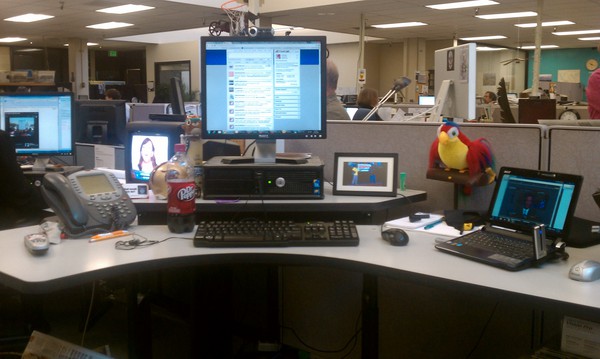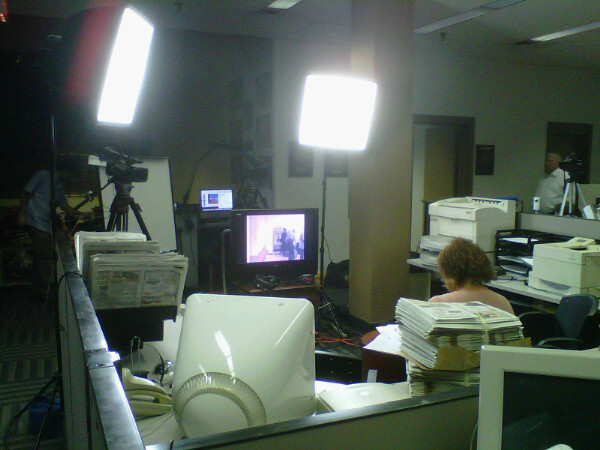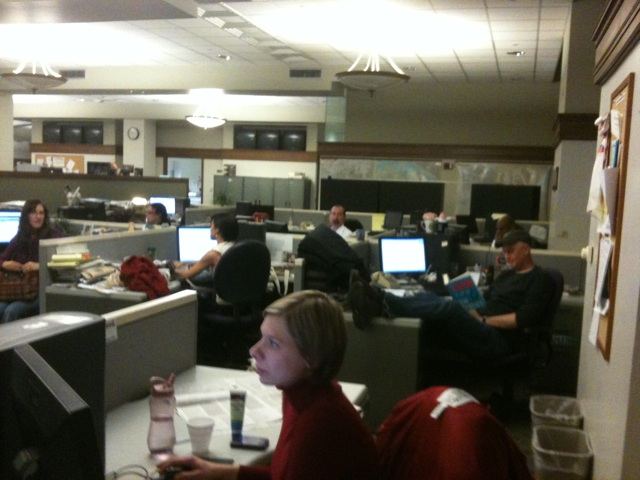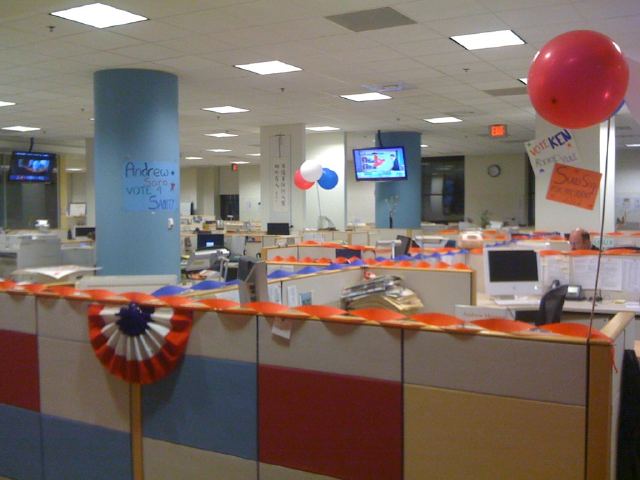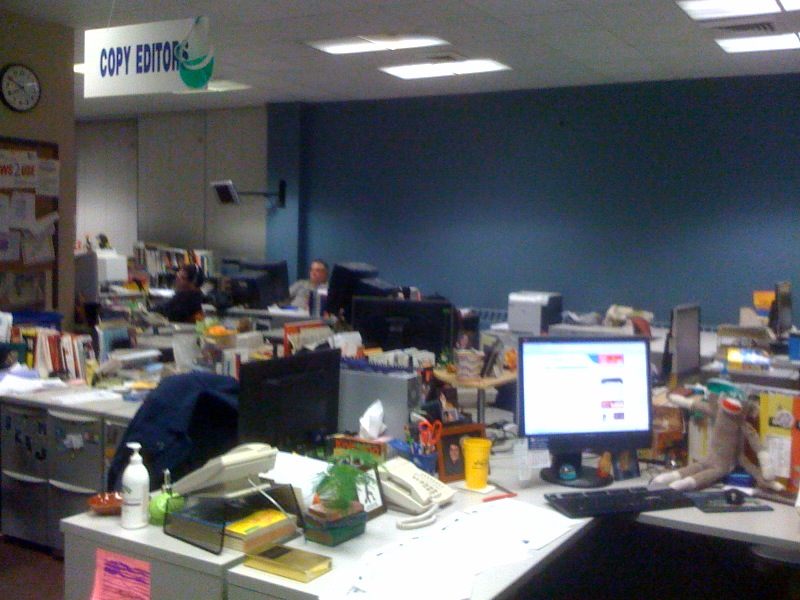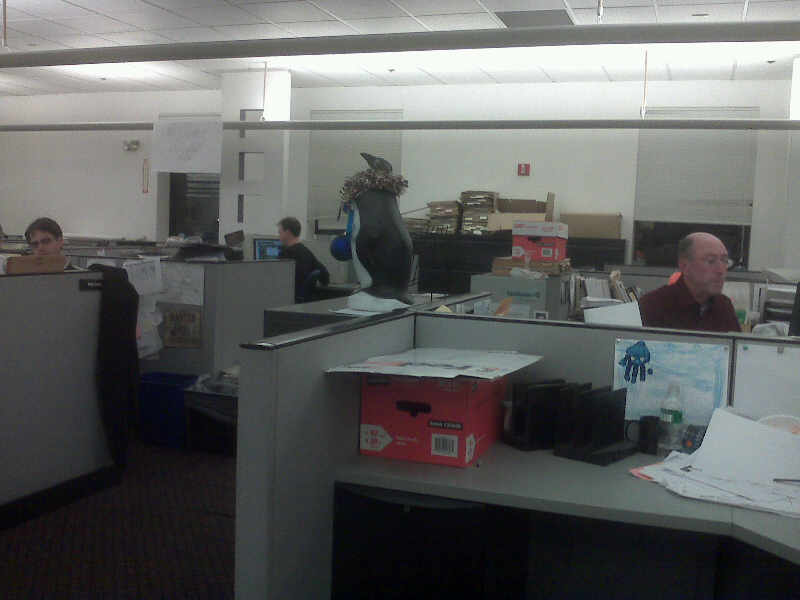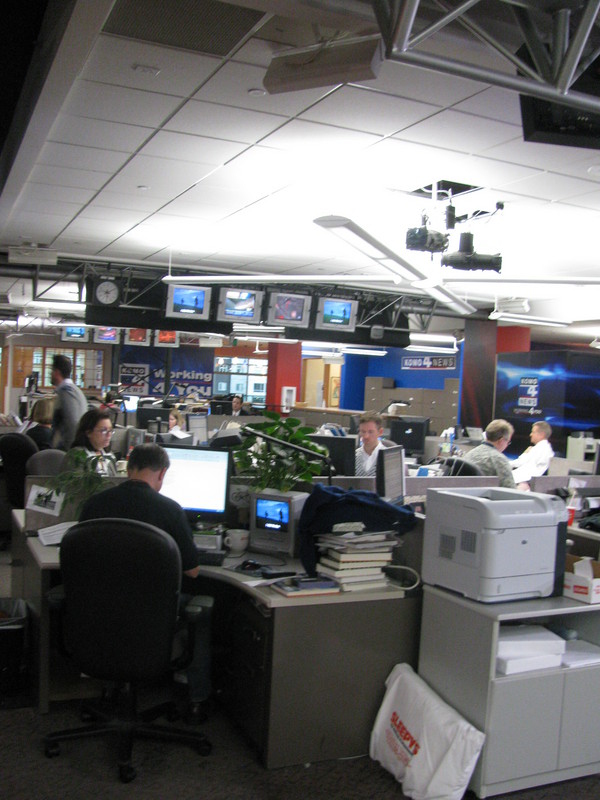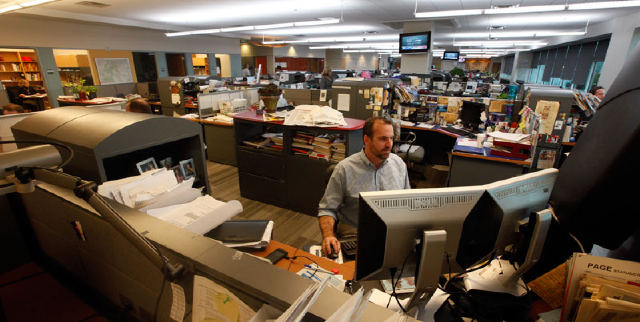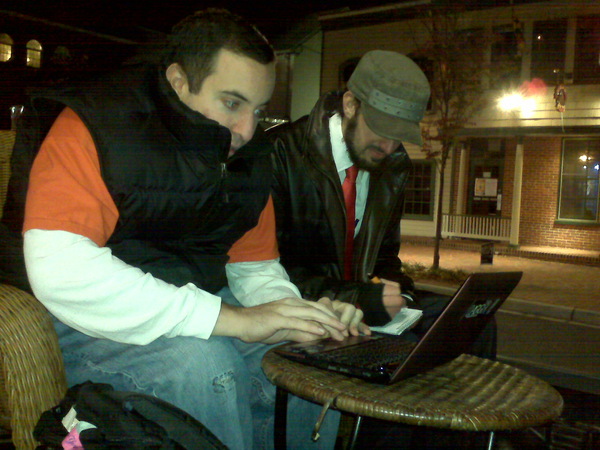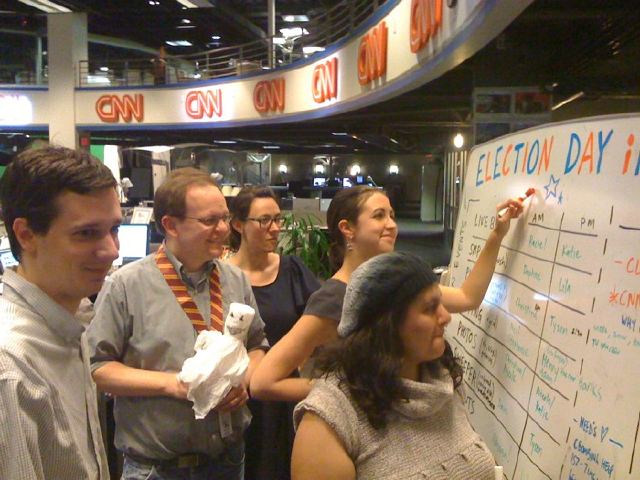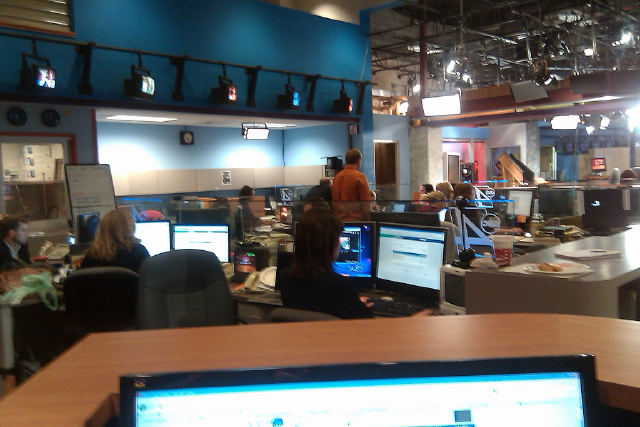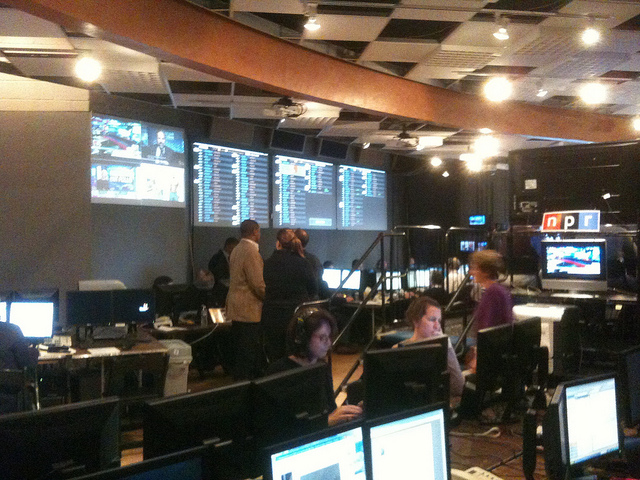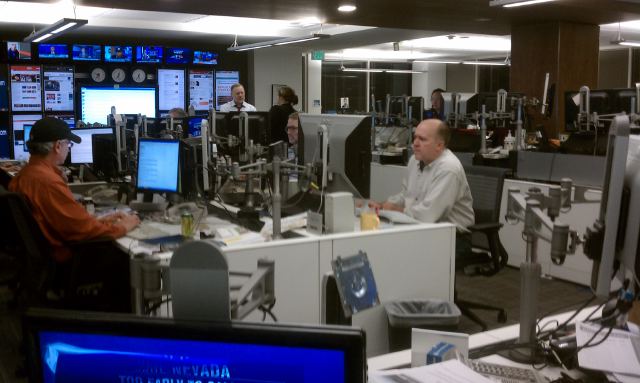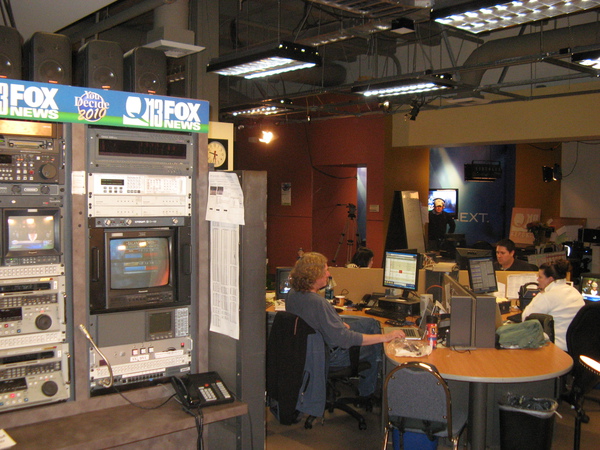NOTE: Originally ran on Online Journalism Review: http://www.ojr.org/ojr/people/webjournalist/201011/1909/
When it comes to Patch, there have been a lot of opinions and questions about AOL’s hyperlocal venture … besides the “evil” one. In previous posts, I’ve crowdsourced journos’ thoughts on Patch to try to capture the conversations many of us have been having.
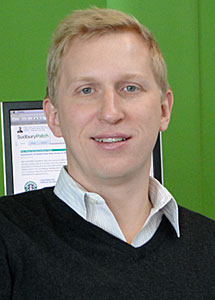 For this week’s post, I took those concerns – and newly crowdsourced questions – to the man overseeing the direction and growth of Patch: Editor-in-chief Brian Farnham.
For this week’s post, I took those concerns – and newly crowdsourced questions – to the man overseeing the direction and growth of Patch: Editor-in-chief Brian Farnham.
I had a long list of questions and asked most of them. Of course, even though we went thirty minutes over our scheduled one-hour interview, there wasn’t enough time to ask them all.
But, overall, Farnham addressed the most common questions and criticisms toward Patch, and also expressed his vision for the network.
NOTE: The interview was done using the collaborative document, typewith.me, and you can play back and read the raw, unedited conversation here: http://typewith.me/ep/pad/view/ojrqa02-bfarnham/latest
Let’s start with some background and context. Can you tell me a brief history of Patch, how it came about… and then a little about your background.
Sure. Patch came right [out] of the brain of Tim Armstrong actually. He’s the CEO of AOL now, but a couple of years ago he was the head of North American ad sales for Google. His big brainstorm, which I won’t go into all the details of (he actually addressed this at ONA), was that small communities were really missing out on the kind of comprehensive news and information experience online that people in big cities tend to take for granted.
Can you tell me the current state/size of Patch and the general goal for the hyperlocal venture? How many employees?
Patch is right now 351 live sites strong, with plans to open another couple hundred by the end of the year (which is not far off!) Employee-wise, we have…several hundred. I have to check the actual number. I’m going to say 600+ safely right now, with about 80% of those being editors out in the field. So it’s a pretty big organization already, which makes it feel funny to call it a startup, but we call it that because we’re truly evolving and growing the idea every day, the way startups do. The goal is to become nothing short of the most useful source of news and information for small communities online. And, I hasten to add, that does NOT mean the ONLY source of information there. We see local media as an ecosystem, and we want to be an active part of it.
Is there target size you are growing toward, in terms of the communities you are branching into?
Yep. The stated goal is 500+ by end of year, and I think it’s safe to say we want to keep growing beyond that, but we haven’t nailed down any goals beyond that.
Can you talk about the strategy behind the locations you have chosen? Are they calculated, organic, etc? Also, there have been some criticisms about choosing locations that tend to be more affluent.
It’s a mix of art and science. We start with a pretty detailed methodology of a lot of kinds of data you’d expect. Census data mostly, just to give us a sense of certain variables in a community we think are important to build a business. But the most important factors are around community engagement. For example, we use a list of the top ranked high schools in the country as a proxy for community cohesiveness, figuring that any community that cares about its school must be pretty engaged. But then we do a lot of actual research via conversations with people who live in those communities, and through that we sort out whether it feels like a place that Patch might do well. As for the criticism about choosing affluent markets, that’s by no means a strategy of the concept. It’s more where the methodology tends to point you because of the variables you’re looking at from the business perspective. We’re not a charity, we’re trying to make money doing this, so that means identifying markets that we think can support an ad-driven business. But that’s not the only kind of market we’re interested in. The idea was, let’s establish the business in the places that will give us the best chance for success and the shortest runways to profitability, but then add on to those the kinds of communities that may be less high-ranking along those market-based considerations, but are equally deserving for every other reason.
Can you talk about how the local media ecosystem also factors in to your decision for a Patch location. In communities where there is no media coverage, Patch is an amazing addition. But one of the criticisms is when a Patch moves into a community that has a thriving hyperlocal scene, smaller news outlets or even regional newspapers … The concern I hear is that by a company as large as AOL coming to these communities where indie, hyperlocals are working… well, it could kill them off. What is your take, your reaction to that concern?
I totally get those concerns. I understand how someone running a hyperlocal site mostly as a labor of love would be concerned when Patch opened in their community, but we are truly not trying to be the Deathstar of hyperlocal. What we see ourselves as is a platform for local community. So it’s more than just a news site. We talk about wanting to digitize small towns and have the sites reflect the community the way its residents would recognize. That’s a long term, constantly evolving process, but we wanted to establish it on a foundation of professional, unbiased journalism. ONLINE journalism, I should add — the distinction being that with online journalism, news is more of a conversation. Not just between the news provider/publisher and the users, but between other news and information providers as well. Ironically, if a community we go into already has online media in it, that tends to be good for us, because the community members are already used to looking for their information online. And when we open a Patch, we’re obviously trying to do the best, most comprehensive job we can covering what’s going on, but we know we won’t get everything and we’re quite happy to link to other sources in town who may have gotten stories, angles or other kinds of content we don’t have or don’t think is in our mission.
We can go in different directions here, but let’s explore this a little more. One of the concerns, mind you fears, that I got from people is… Patch is coming to so many communities, taking on so many new employees, evolving… in a hyperlocal concept that, to some people, hasn’t proven itself… committing $50 million to expand… but what if it fails. And in the process whips out the local, indie media scene? There is a great responsibility here… a great weight that is, for some reason, put on Patch… even though it is not the first, nor probably the last, to try hyperlocal at a large scale. What’s your take on that concern?
You know, it’s funny: people often criticize companies in media for not being imaginative enough, innovative enough, or taking enough risks. Patch is a bold move, and I’m not bragging by saying that. There’s a lot of risk and we take that seriously. But we also believe — really passionately believe — that communities deserve and can use the kind of platform we’re trying to build. And I think that if it were to fail (which we have no intention of letting it do!), that won’t kind of suck out all the air from local. If anything, it will give people a lot of lessons on how to do it better, as most failures do. So I think it’s got to be considered a positive no matter how you look at it: if it succeeds, it was a big bet on giving communities an incredible online source to understand and navigate themselves; if it fails, it’s giving everyone else a lot of insight into what works and what is truly needed by these communities online. But I don’t think it will destroy all those other sources in town either by succeeding or failing.
Like I mentioned, Patch isn’t the first in going hyperlocal at this scale… what do you think makes it different from the others? I believe you worked at sidewalk.com. What’s the difference here?
Ah, Sidewalk. You know, I was just talking to someone who worked there when I did, and we were lamenting the loss (as vets of sidewalk often do). We were also remarking that Patch now feels an awful lot like Sidewalk did then (late nineties): full of energy and passion for an idea that really seemed like it could change people’s lives by giving them something they need and didn’t have before. I actually don’t think Sidewalk failed at all — it just wasn’t something that Microsoft ultimately had the confidence to continue because it felt at odds with their real “core competencies,” as they say. But the difference between Sidewalk and Patch is really nothing more than altitude — Sidewalk flew at the pretty-big-city level; we’re much closer to the ground. And even then, Sidewalk was competing with a lot of other kinds of media serving that altitude. While there are obviously newspapers and blogs and bulletin boards and other kinds of media serving our communities, we don’t think anyone is trying to create the comprehensive platform that we are, either because they don’t have the resources or don’t think it’s their mission.
This is a good time to mention our Directory: not sure how much you know about it, but it’s this whole pillar of our business. It’s really our own, hand built local Yellow Pages. We thought it was important, if we were going to do this, that our site represent as much of the community as it could, and that meant all the businesses and organizations that exist there. We could’ve just gone out and bought one of the many directories that exist for the country, but in doing research we realized that even the best of these lists aren’t better than 35% wrong. That’s not news to anyone who has searched for local businesses on online yellow pages sites, but its’ still pretty staggering. So rather than resort to this, we made the decision to invest in a team that, before we launch, goes to every business, org, government agency, public park etc and records as much tailored info into structured data fields as we can, and then takes at least 10 quality photos. That creates a crucial basis for the news operation as well — news happens at places, and by having a detailed listing for those places, we have a head start on anything that occurs there and can geolocate the story instantly. That’s just one small example of the usefulness of this. The bigger point is that we see businesses as a part of the community as much as any resident, and their lives, so to speak, should be reflected on Patch.
For better or for worse, one of the biggest criticism or concerns about Patch is that it is coming into communities under the journalism flag. When I think of citysearch, Yelp, other places that have a directory… journalism doesn’t come to mind. That said, you have made a commitment to journalism by hiring some great journalists… what is your vision for the type of journalism Patch is producing/trying to produce? And, Patch is huge… how do hope to maintain that level of quality. Does it get sacrificed for quantity? What do you have in place to maintain the quality of content that matches your vision?
Nothing excites me more than the opportunity we have in front of us regarding journalism. An early dream was the day when we had enough sites that a coordinated effort on a small local story would lead to something much, much bigger when taken together. The example I always give is municipal salaries: imagine every Patch editor digging into this locally at the same time. They produce a story about what local pols are making, and that’s interesting and a service to the local taxpayers. But then we take all those stories from what are hundreds of Patches and we suddenly have a snapshot of municipal salaries in the United States. That’s kind of the classic AP approach, but at an even more granular level. We aspire to be a new kind of AP.
As for the quality, that’s always a challenge for any site doing content online, because the 24-7 nature of things is an abiding pressure. (At least for those doing news). We take quality very seriously, and we’ve tried to build a structure that can attend to it. That includes having Regional Editors overseeing the Local Editors, and it includes making budget available to hire things like copyeditors locally. We leave those decisions largely up to the local Patches because we firmly believe a one-size fits all model doesn’t make sense. Some regions may have different issues around quality than others. But before any of that, we spend a LOT of time hiring carefully — the Local Editors are absolutely the heart and soul of this operation and we trust them to do an awful lot. Maintaining a high level of quality is job #1.
Can you quickly outline the structure of Patch … from the bottom to the top.
Sure. It starts with one Local Editor for every Patch. (In some rare cases, there are even two, if the market is big enough to demand that. Naperville Patch in Illinois is an example of that.) Then we organize our sites into regions of 12 sites that [are] run by a Regional Editor. Finally, every region of twelve [has] a “13th editor.” This could be a more junior editor who is writing stories and supporting Local Editors sort of on the ground, or it could be junior Regional Editor who is more helping manage the region as well as supporting LEs. The point of the 13th editor either way is to take as much pressure off LEs as possible, by covering vacations etc.
Continuing the structure, regions roll up into “super regions,” and super regions roll up into zones. There are four zones right now, and each one is headed by an Editorial Director, who is kind of a mini EIC for their zone (which can be hundreds of sites at the end of the day). Then there’s, well, me. Plus a small centralized team at HQ. While I head the editorial organization, I see myself as back-office support for the field. That’s how we all feel at HQ — we’re there to support the real operation out there in all the communities we serve.
Well, let me ask one of the questions/concerns that people have thrown around and have had strong opinions about… I’m sure you have heard the term “sweatshop” used when describing certain elements… I gather, though, it comes from those who work below the local editor? Is that accurate? Those who are going to actual locations and interviewing managers for directory information… I was a given a description about the tasks outlined by HQ, and the person felt that it was near impossible — asking the questionnaire, taking photos, writing a general description/review — to do with the perceived amount of time. What is your response to this reaction… and is there anything being discussed/changed to address these concerns, if you find them valid?
Yeah, the particular description you’re referring to came from one of the freelance Community Listings Collectors we hire to do the listings, in the way I described above. While those jobs are challenging, certainly, the Directory team has created an incredibly efficient and intelligent system, and the CLCs who get the system can often do quite well financially. I honestly haven’t heard that many problems, and we’ve had hundreds and hundreds of CLCs work for us. It’s not for everyone and a lot of people quit — but that’s fine. It’s not easy going door to door all day talking to people who need to have this new concept described to them. But that’s kind of the point — it’s totally freelance and those people can opt out. If the tasks we assign were really impossible, we could not have come nearly this far. We’ve launched over 350 [sites], and all of those have complete directories, so something must work about it!
One more note on the sweatshop thing: the LE job is really, really hard. I’m the first to admit it. We spend a lot of time at HQ and at the Editorial Director and Regional Editor level talking about how to relieve the pressures and how to change and evolve the job to make it more manageable. But some of the challenges are not due to any decisions we’ve made in building this operation — journalism, at any level, is hard. It’s not 9 to 5, and it’s not for everyone. That doesn’t excuse us from continuing to work on making the job of LE better in every way, but it is a central fact that shouldn’t be forgotten.
Is there a Patch you can point to that you think exemplifies your vision? The ideal quality and engagement you hope other Patches can aspire to be? And, on the flip side, are there Patches you are working on improving…. don’t name them, but are you aware of some problem Patches, and what are you doing to improve them?
Ok, this is going to sound like a really political answer, but there are so many good Patches I hate to single anyone out. What’s great to me is how all of them end up with their own personality in one way or another. That might be because the LE has a particular interest in and skill with video, or because they bring some savvy about local politics to the table. It’s just always different.
And are there Patches that can be doing better? Of course. But it’s not always clear if performance issues are [due] to something the LE is or isn’t doing or if there’s some inherent reason the market isn’t responding to the site. But so far there are no failed sites — it’s early days, and by and large we have seen phenomenal acceptance and audience growth in our Patches.
In terms of quality, the other negative criticism has been in the quality of journalism… which is subjective… but the concerns and allegations about plagiarism are valid… at least in two cases, [correct]? How do you address those concerns? Perhaps not failed Patches, but those are some significant issues, [are they not]?
Absolutely — for any self-respecting journalism operation, plagiarism a serious concern. But we are really not alone in hiring human beings who make mistakes, which is often where a lot of instances of plagiarism happen, especially online. I’m not excusing the incidents you cite, but in one case the plagiarism was in copying a photo-collaged image of public-domain police mugshots without crediting the blogger who made the collage. Again — flat out wrong, no excuses. But the editor was working hard and going too fast and got sloppy. In the other incident, the plagiarism was by a freelancer, not a fulltime editor. When we found out about it, we immediately apologized, corrected the record, and ended our relationship with the freelancer. That’s about as much as anyone can be expected to do: what really matters to me is how we respond to any mistakes we make, and what we do from that point forward to learn from the mistakes and try not to repeat them. Following the incidents, we created a new online training module about issues of plagiarism and we’re making it a requirement for all editors, old and new, to take the module. That’s rolling out within a couple of weeks.
One final note on the allegations of plagiarism: we’ve been plagiarized ourselves. I’m not throwing that out there as an “everyone does it” thing, I’m more making the point that there is a lot of this kind of thing happening on the web, but we’ve been called out I think because we’re a convenient target. Have to add once more: there’s no excuse for plagiarism and we shouldn’t do it!
Do you want to elaborate on the plagiarism or just let your statement stand?
Yeah, I won’t elaborate because I don’t want to make too big a deal about it. Stuff happens and you deal with it, on both ends of the issue.
At ONA10, Tim talked about exploring the possibility of Patch partnering with other hyperlocal sites. What do you think the ideal relationship would be between Patch and the indies? There have been some folks who have been offered jobs, rather than partnerships. There have been folks, who in essence, were “warned” Patch is coming… what is the ideal ecosystem for Patch in these communities that have multiple sources trying to serve the community?
I’m glad you asked that question! Partnerships are going to be a big area of concentration for us in the coming year. This past year has been mostly about just establishing ourselves — just putting out the shingle and getting our legs beneath us. But now we want to explore all the opportunities in the various ecosystems we’ve joined. I don’t think you can identify one ideal relationship — it’s really going to depend on what’s in the market. Maybe it’s something around sports coverage in one community; maybe it’s just cross-linking in a formalized way in another. We’re open to all these conversations.
As for the comment/criticism or whatever it is about people being offered jobs, I kind of have to laugh. Think of it from our perspective: we identify a community we’d like to launch Patch in. The first thing we do is try to find the most talented, qualified person to run that site. Very often that leads us to the person who has already demonstrated they know how to run an online news or information site in that community! So it’s only natural we’d talk to them. We’re not trying to get anyone to shut down their site or buy anyone out — we’re trying to find the best person for the job. I could see us being criticized for NOT contacting those kinds of people: “If Patch is serious about local why wouldn’t it try to hire one of the established local experts online! They’re clearly not serious about this…” You kind of can’t win with certain critics.
And on the “people being warned’ thing — I hope to hell that’s not happening. If it is, and I find out about it, I’m going to have a conversation with those editors. But I really find it hard to believe that’s a widespread thing. The editors we’ve hired are incredibly smart, passionate people, and I’d like to believe that in a lot of those instances it might have been more of the nature of a friendly competitive wink. But on the other side of that, it might not feel that friendly, and I understand that, so I would advise our people that they not even joke. We want them to be competitive in positive ways — I think that’s good for everyone. We don’t’ want to be antagonistic.
There are many more questions I can ask… and we’re passed our time. Let me ask you two final questions.
First, the question that sparked this conversation about Patch, which was on the mind of many, many ONA attendees: Is Patch evil. (I had to ask)
Ha! You know, I was at ONA and I LOVED your question. I [meant] to tweet you afterward but you were too busy being mobbed by groupies. ;-)
I don’t think I could give a better answer than the one Tim Armstrong gave: the only people who should really be asked that question are our users. If they decide we’re evil or unnecessary, they will vote with their feet and the problem will solve itself. But if we’re doing our jobs, I don’t think people would argue with what we’re trying to do.
But thanks for getting that question out there — I think it totally captured and summed up a kind of general angst about what we’re doing and we were glad to have the opportunity to address it. I think these kinds of discussions are really healthy. We respect the concerns that are out there, so we welcome the chances to talk about them. In fact, we’re about to launch a corporate blog (I almost erased that because I hate calling it “corporate”) — but an official Patch blog to try to proactively describe the things we’re doing and the reasons why. And I’m sure we’ll get a few “you’re evil” type comments on the posts here and there, but that’s ok! We can have that convo there too.
Lastly, is there anything you’d like to add as we wrap up?
Not really. My fingers hurt. ;-) But I’ve actually really enjoyed this. Cool way of doing things.
Thank you so much… you have been gracious with your time!
My pleasure, Robert. Any time!

